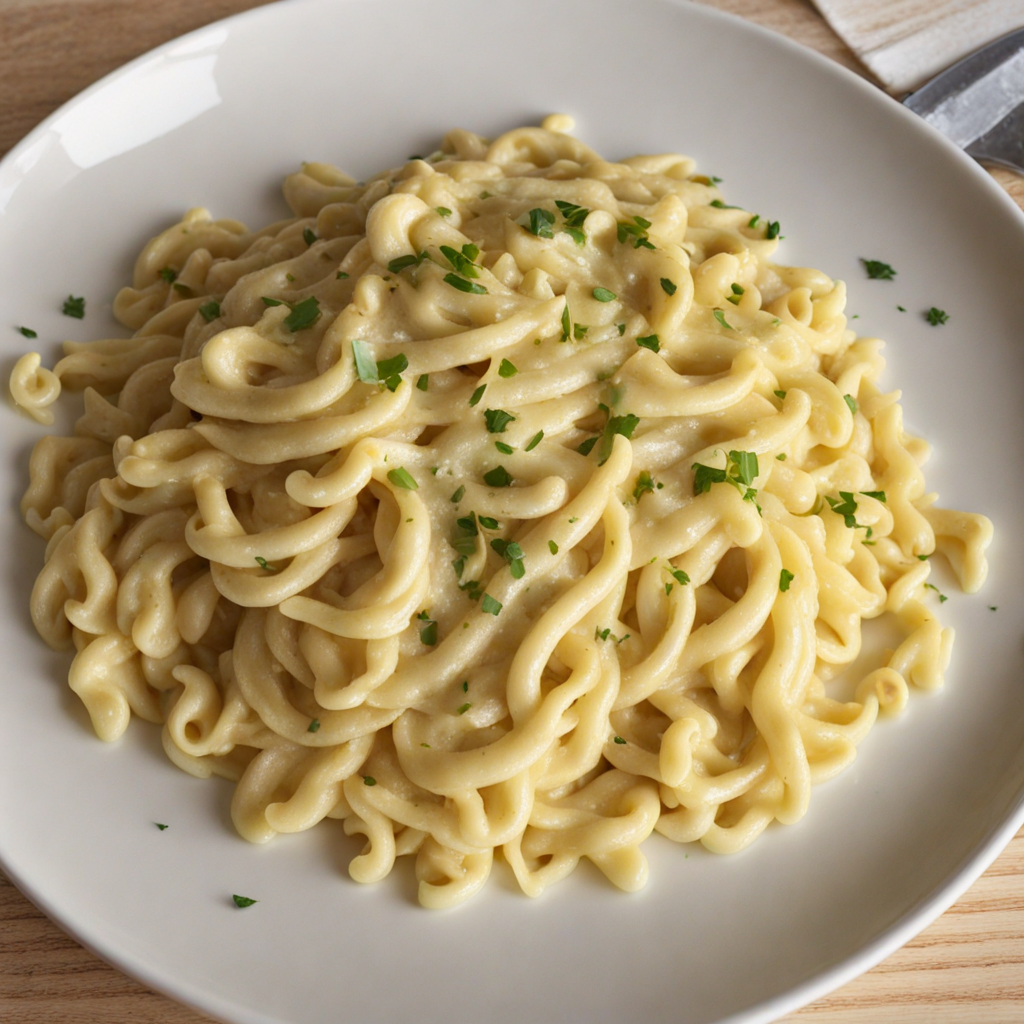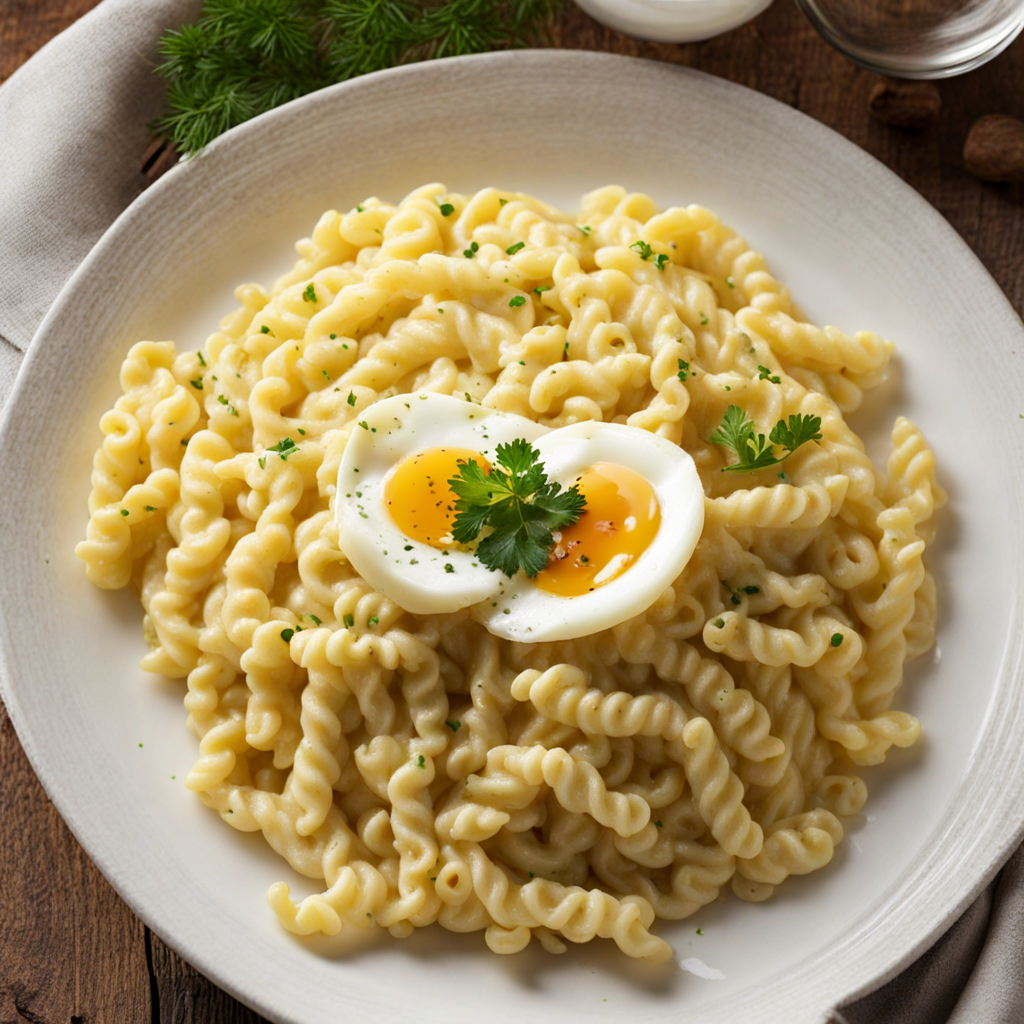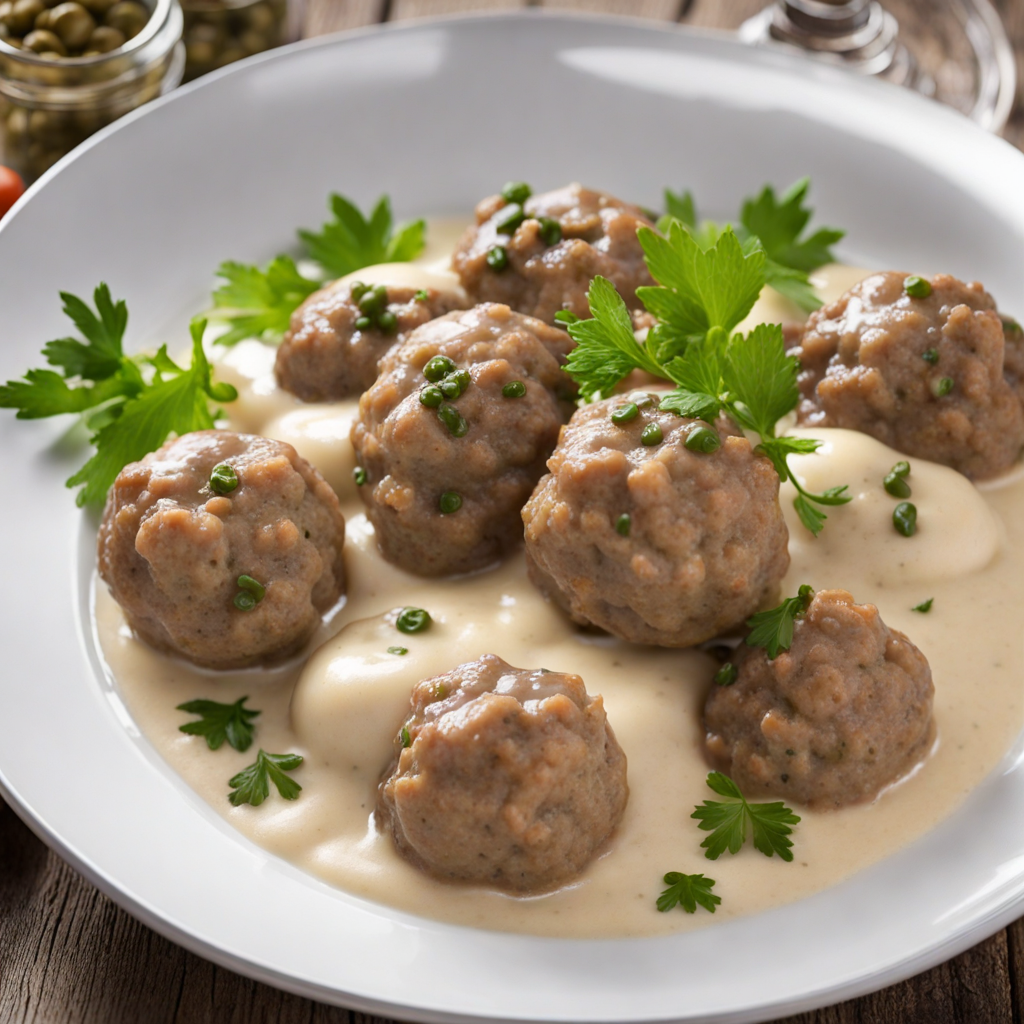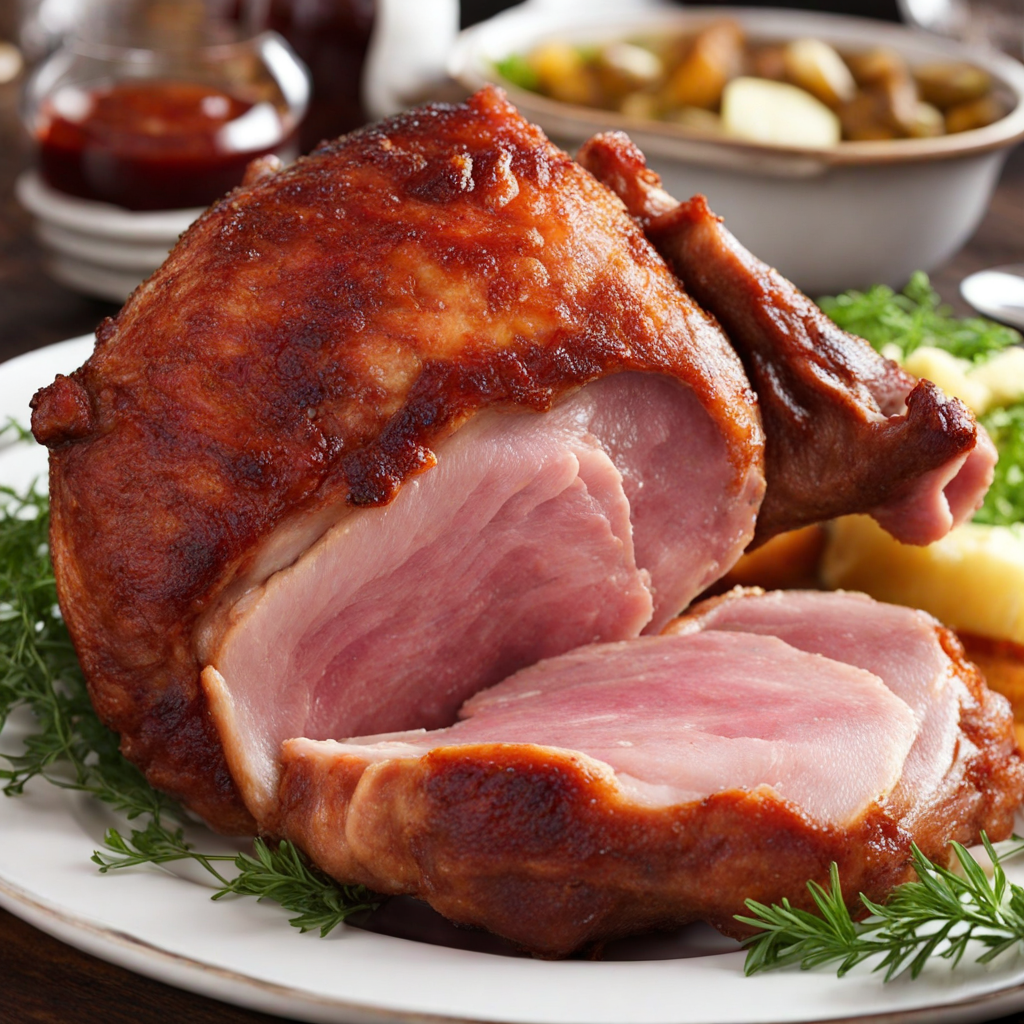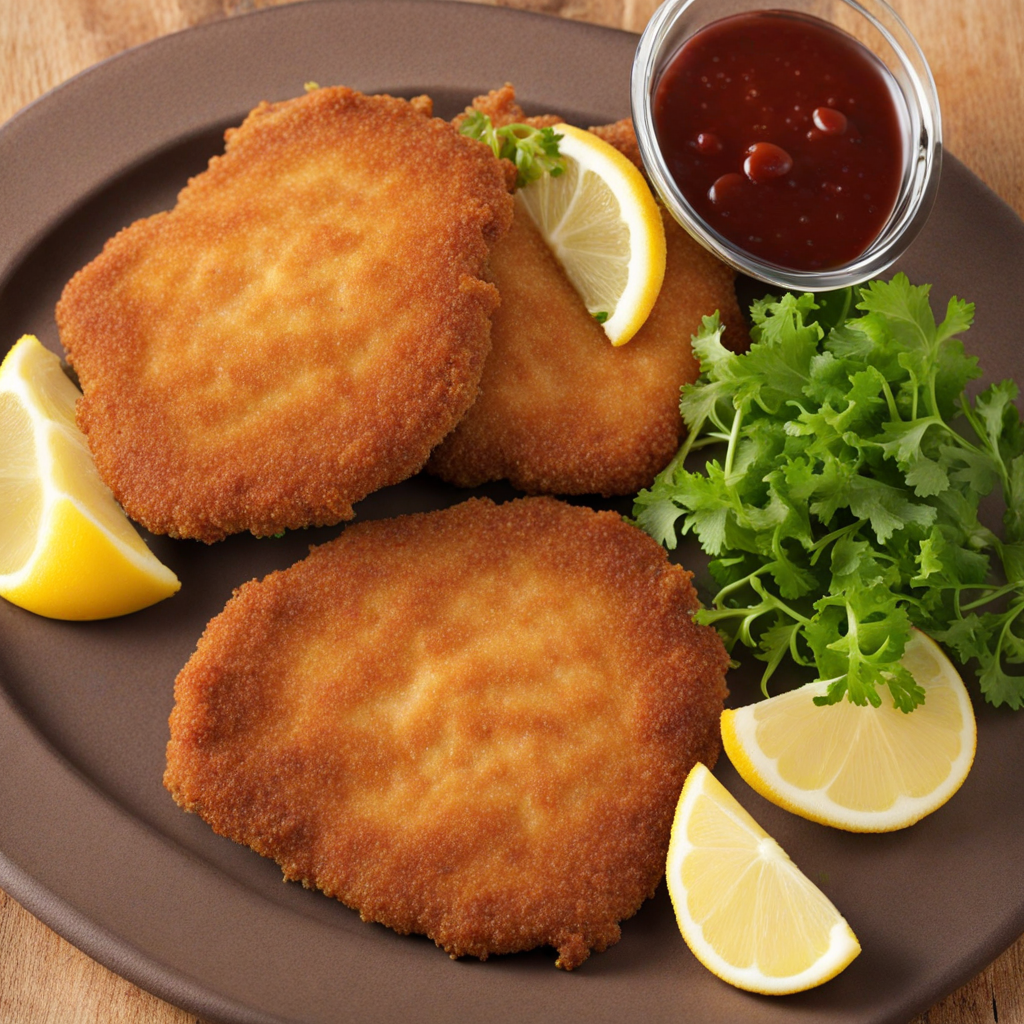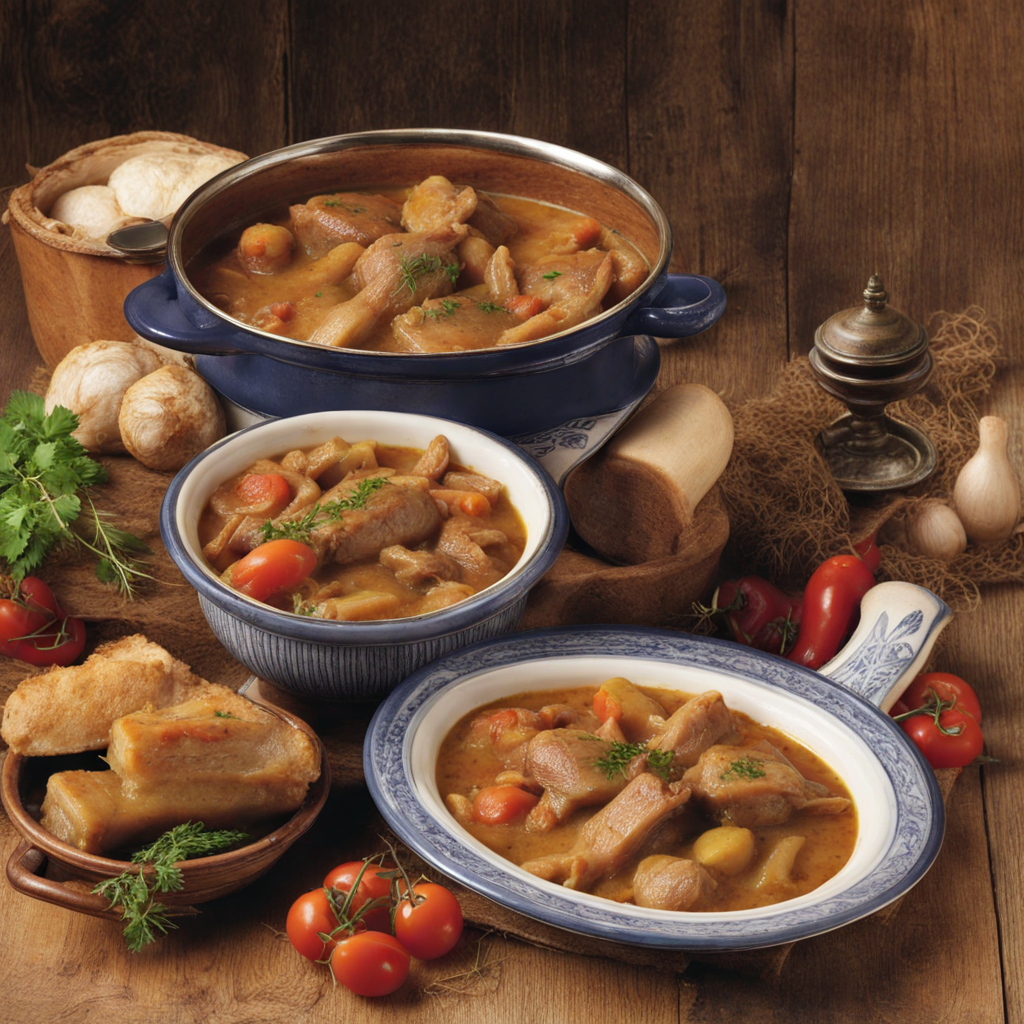Spätzle
Spätzle is a delightful type of German egg noodle that boasts a unique texture and flavor. Traditionally made from a simple mixture of flour, eggs, and salt, the dough is characteristically soft and slightly sticky. What sets Spätzle apart from other pasta is its irregular shape; it is often formed by scraping the dough through a colander or a special Spätzle maker, creating small, dumpling-like pieces that have a tender yet slightly chewy bite. This rustic preparation method also contributes to its charming appearance, making it a visually appealing addition to any dish. Often served as a side dish, Spätzle is incredibly versatile and can be paired with a variety of savory accompaniments. It is commonly enjoyed with rich gravies, sautéed mushrooms, or alongside hearty meats such as schnitzel or roast pork. In some regions, you might find it topped with melted cheese and crispy onions, known as Käsespätzle, which transforms this humble noodle into a comforting and indulgent meal. The flavor of Spätzle is mild, allowing it to absorb the tastes of the sauces and ingredients it is paired with, making every bite a delightful experience. For those seeking to explore regional variations, Spätzle can be found in numerous forms across Germany. In the Swabian region, it is often served in a simple broth, while in southern Germany, it might be prepared with a touch of nutmeg for added warmth. The dish's adaptability extends to the addition of herbs or vegetables, enhancing its flavor profile. Whether enjoyed in a traditional German feast or as a cozy weeknight dinner, Spätzle promises to introduce adventurous eaters to a comforting and satisfying taste of Germany.
How It Became This Dish
The History of Spätzle: A Culinary Journey through Germany #### Origins and Etymology Spätzle, a beloved egg noodle dish, hails from the heart of Germany, but its roots can be traced back to the broader culinary traditions of Central Europe. The word "Spätzle" translates to "little sparrows" in Swabian dialect, a charming name believed to have originated from the shape of the noodles resembling tiny birds. The dish is widely associated with the Swabia region of Germany, particularly in the states of Baden-Württemberg and Bavaria, but it has also found its way into the culinary hearts of Austria and Switzerland. The earliest references to Spätzle date back to the 18th century, although some culinary historians argue that forms of the dish may have existed even earlier. It is thought that Spätzle evolved from similar egg-based dumplings common in the region. The technique of making these noodles—combining flour, eggs, and water or milk—was likely influenced by the availability of local ingredients and the necessity of creating hearty meals that could sustain families during harsh winters. #### Cultural Significance Spätzle is more than just a dish; it is a symbol of comfort and home for many Germans. Traditionally, it has been a staple in German households, often served as a side dish accompanying rich gravies, meats, and stews. In fact, it is often said that Spätzle is the perfect companion to dishes like Sauerbraten (pot roast) or Geschnetzeltes (sliced meat in cream sauce). The dish embodies the German culinary philosophy of "Essen mit der Familie" (eating with family), as it is often prepared in larger quantities to share among loved ones. In addition to its familial roots, Spätzle holds a place in regional celebrations and festivals, particularly in the Swabian and Bavarian cultures. It is often featured during Oktoberfest, where it is served with various meats and sauces, showcasing its versatility as a culinary delight. The dish is also popular during festive occasions, family gatherings, and Sunday dinners, reinforcing the idea that food is not only sustenance but also a means of connection and celebration. #### Preparation and Variations The preparation of Spätzle is an art in itself. Traditionally, the dough is made by mixing flour, eggs, salt, and water or milk until a thick, sticky batter is formed. There are various methods to shape the noodles, with two of the most common being the use of a Spätzle maker (a tool with holes through which the dough is pressed) or a simple colander. The dough is either pushed through the holes into boiling water or cut from a board, resulting in the characteristic irregular shapes of Spätzle. Regional variations abound, reflecting local tastes and ingredients. In Swabia, Spätzle is often served with a rich cheese sauce, known as Kässpätzle, which is akin to macaroni and cheese but with a distinctively German twist. The dish is layered with cheese and often topped with crispy onions, making it a hearty meal in itself. In Bavaria, Spätzle can be found in dishes like Schwäbische Spätzle, which are typically served with gravy or as a side to hearty meats. In more recent times, innovative chefs have begun to experiment with Spätzle, incorporating ingredients such as spinach, beetroot, or even pumpkin into the dough to create vibrant, colorful variations of the dish. These modern takes on Spätzle reflect a growing interest in culinary creativity while still honoring the traditional roots of the dish. #### Development Over Time As Germany underwent periods of change throughout history, so too did Spätzle. The dish became popular in the 19th century during a time of culinary evolution in Europe, as the rise of the middle class led to increased interest in regional foods and traditions. Cookbooks began to emerge, documenting traditional recipes and encouraging homemakers to explore the culinary heritage of their regions. Spätzle made frequent appearances in these publications, ensuring its place in the German culinary canon. Following World War II, as Germany was divided and the country faced significant social and economic challenges, Spätzle remained a comforting constant in German households. It was a dish that required minimal ingredients and could easily be adapted to suit frugal cooking needs, making it a staple during a time when resources were scarce. In recent decades, there has been a resurgence of interest in traditional foods as people seek to reconnect with their culinary heritage. The rise of farmer's markets, artisanal food production, and a focus on local ingredients has breathed new life into Spätzle and other traditional dishes. Home cooks and chefs alike have embraced the craft of making Spätzle from scratch, celebrating its simplicity and versatility. #### Conclusion Spätzle is more than a dish; it is a rich tapestry woven into the culture, history, and identity of Germany. From its humble origins as a regional specialty to its place as a beloved comfort food, Spätzle has evolved while remaining deeply linked to the traditions of family and community. Whether served as a side or as a main dish, its comforting presence on the table continues to bring people together, celebrating the simple joy of good food shared among family and friends. As culinary traditions evolve, Spätzle remains a poignant reminder of the past, a dish that carries the essence of German culture and a testament to the enduring power of food to nourish both the body and the soul. Whether you enjoy it in its traditional form or seek out modern interpretations, Spätzle invites you to savor the flavors of history while celebrating the bonds that unite us through the universal language of food.
You may like
Discover local flavors from Germany


